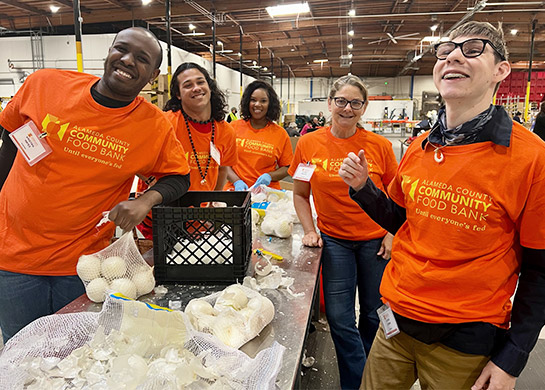Golden Gate National Parks Conservancy
A website upgrade to celebrate San Francisco’s natural beauty
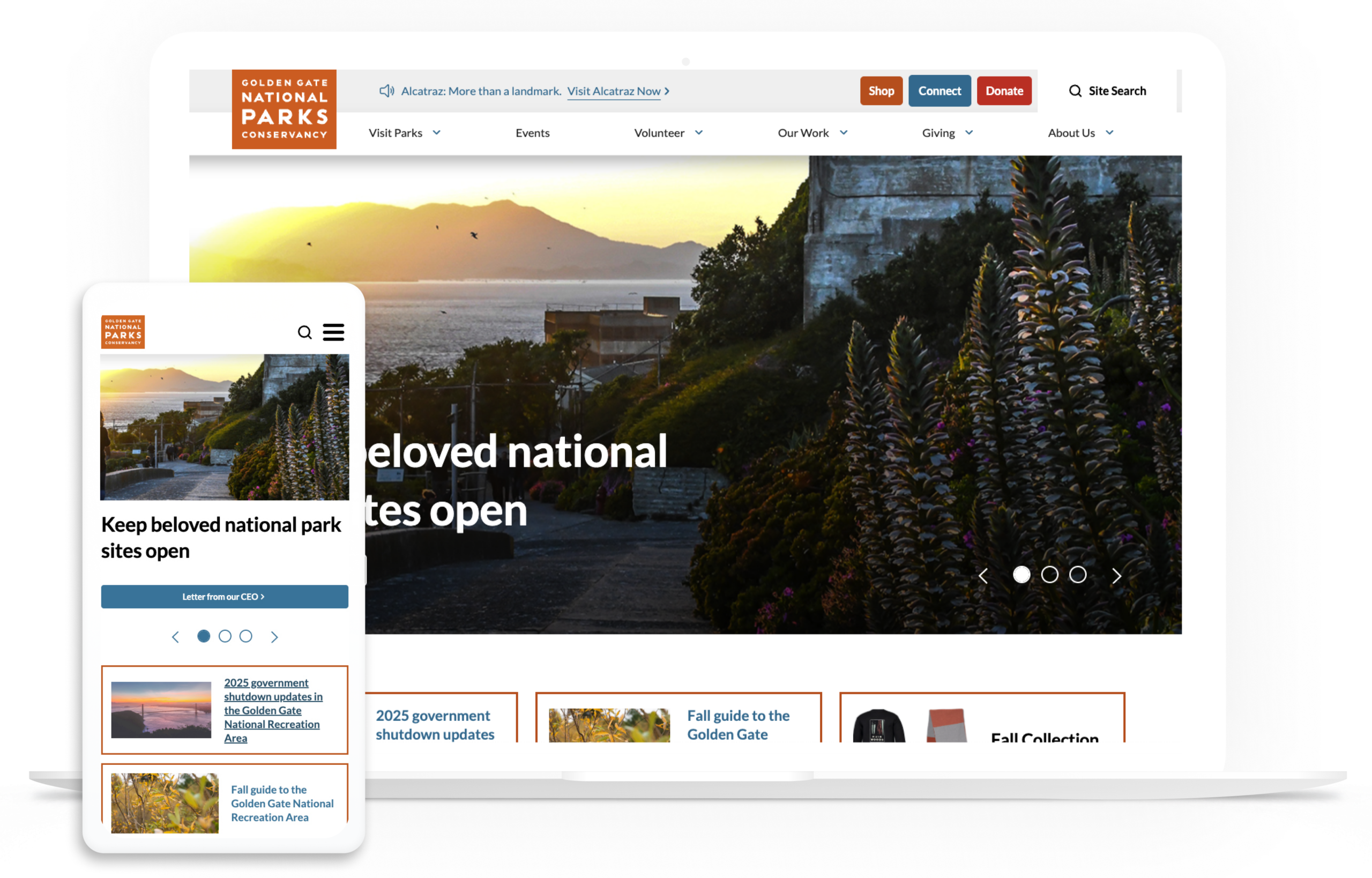
Client Overview

The Golden Gate National Parks Conservancy has a mission of “Parks For All Forever.” Their nonprofit membership organization enhances access, recreation and educational programs in Golden Gate National Parks, including Muir Woods, Crissy Field, and Alcatraz.
Services provided
Parks Conservancy Mobile Gallery
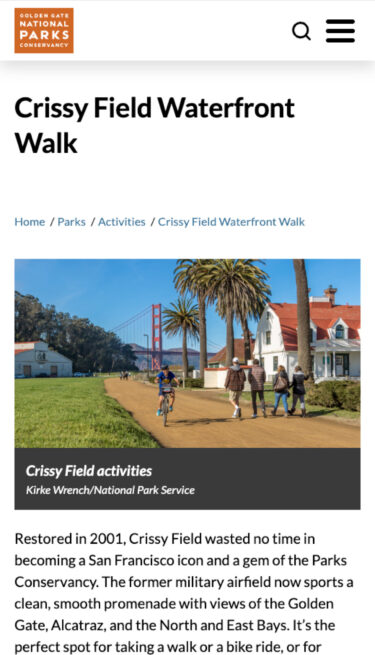
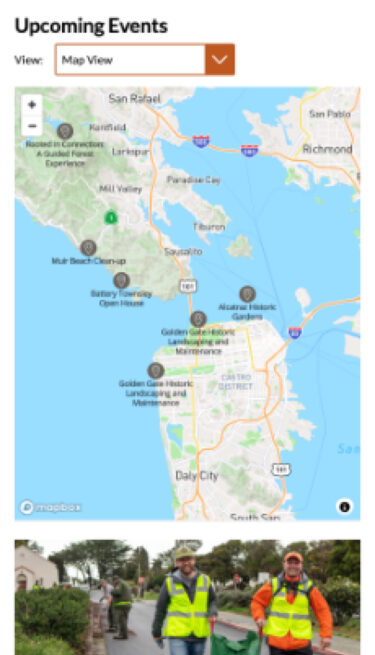
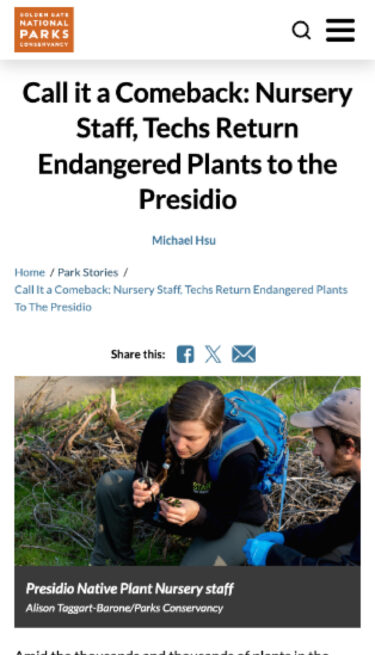
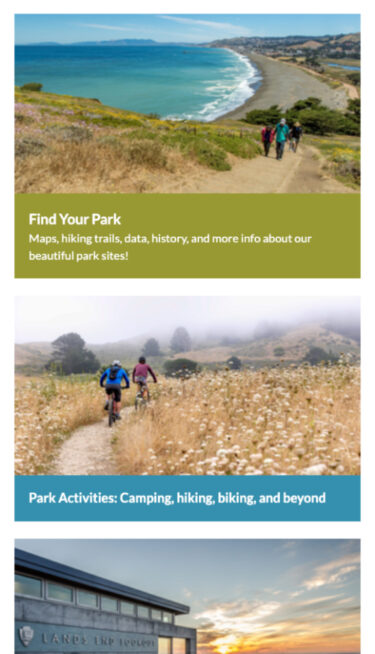
The challenge
The main driver of this project was a need to upgrade; the Parks Conservancy website had long been on Drupal 7, and took advantage of its staying power to the fullest. But as D7 was finally being sunsetted, it was time to upgrade.
During the migration, Parks took the opportunity to create enhancements to the site. Parks has been a long-time client of Kanopi’s since 2017, so it was a natural next step to enlist us with help to both migrate and improve the website.
The process
Entity Reference Diagram
It was important to condense the number of Content Types and Fields in order to make it easier for editors to create content and avoid confusion.
To facilitate this process, we created intricate Entity Reference Diagrams that mapped what fields will merge into others during the migration.
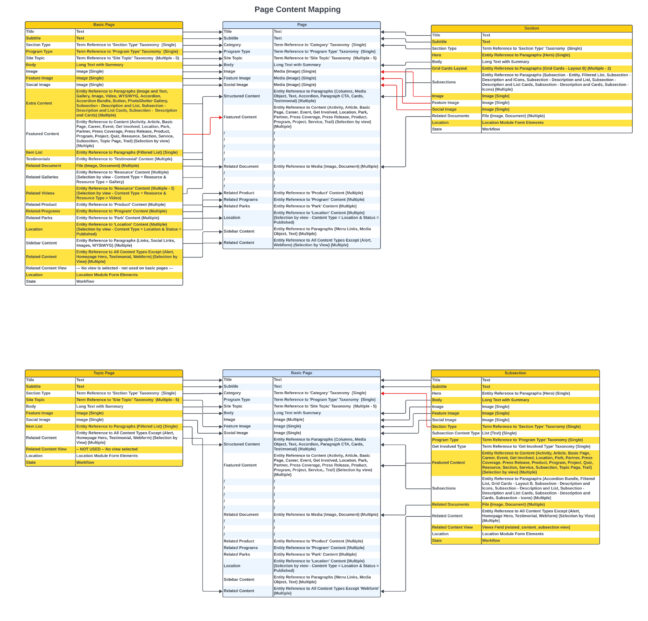
Reworking Events
In Drupal 7, every event had its own node. WIth the upgrade to D10, Parks can now create a Parent event as well as Child events that inherit the main information from the Parent event (such as Location, etc). Flexibility was built in to override Child information if needed (eg: if the location changes).
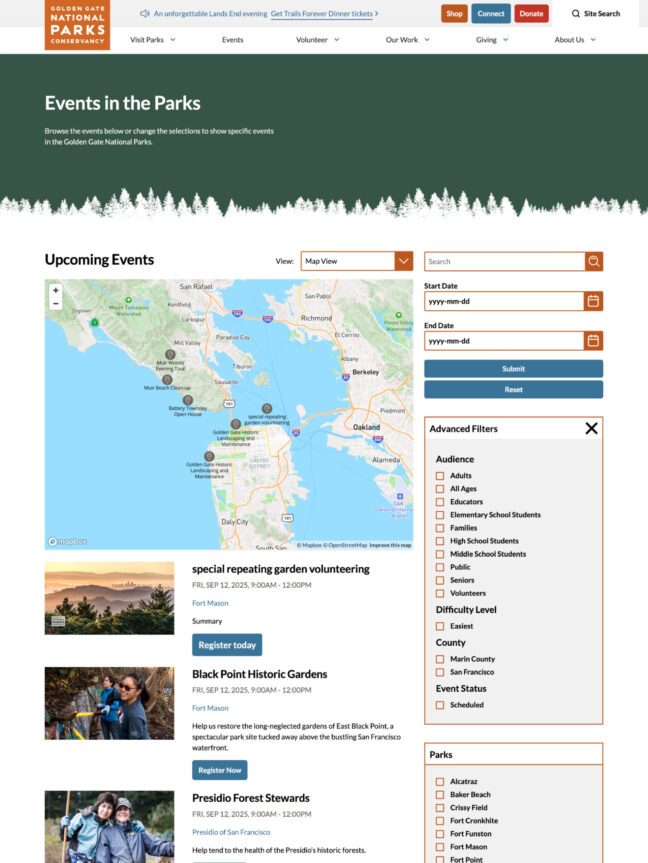
The solution
In moving Parks Conservancy’s website to Drupal 10, we went beyond a simple upgrade and focused on editorial empowerment.
A key part of this work was introducing new templates that automatically pull in related resources, ensuring consistency across the site. For example, if an editor is writing about birds, they can choose the “birds” template and all related content will surface alongside it. Editors can even create their own templates — such as for birds, flowers, or other subjects — on the fly, eliminating the need to manually build horizontal content pathways.
We also consolidated reports, which had previously been fragmented and scattered across third-party services. By creating a dedicated Reports section within Drupal, staff can now publish and manage reports directly on the site. These reports are indexed for search, making them easier for visitors to find and allowing staff to create reports without leaving the platform.
Editorial control was further enhanced through improved curation tools, allowing staff to select and organize content for nodes using manual keyword-based controls.
The Events section also received a major upgrade: rather than each event being its own standalone node, editors can now create a Parent event with shared details (like location) that cascade down to Child events. Child events inherit the parent details but can be customized if needed, streamlining event creation while maintaining flexibility.
Finally, to address growing costs with Google Maps, we transitioned their mapping functionality to MapBox. This more affordable and flexible tool allows Parks Conservancy to design their own maps and highlight trails with greater efficiency, giving users a richer and more sustainable mapping experience.
All this was done while building upon and maintaining the existing work that had been done to date in showcasing what was happening at parks each day. Visitors can easily get key information such as trail data, volunteer programs, events, and more in seconds, all wrapped in a mobile-friendly experience while they experience the parks on the go.
Key features
Templates
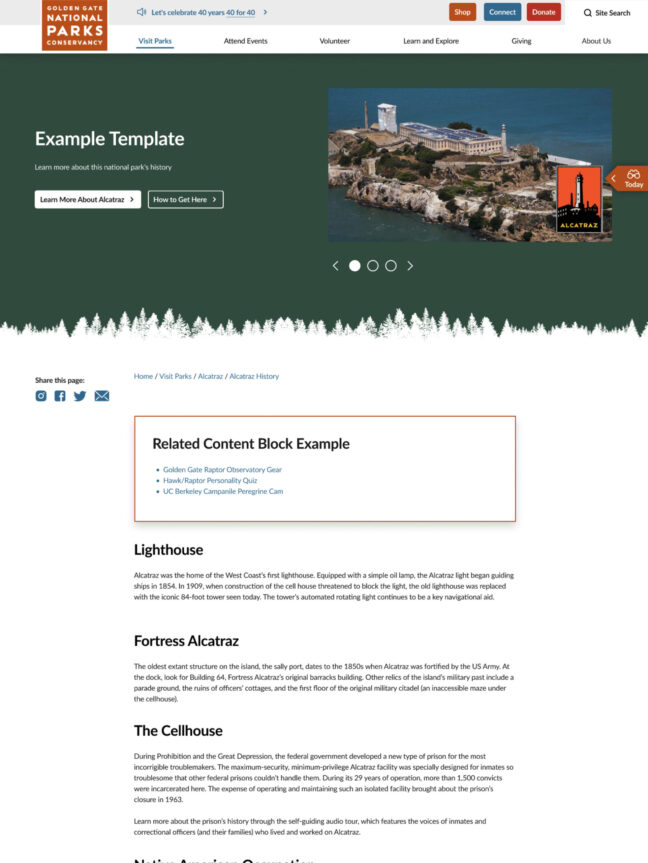
With new templates, Parks Conservancy editors can easily create topic-specific sections — such as birds or flowers — that automatically surface related content. This ensures consistency across the site and eliminates the need to manually build complex cross-site content pathways.
Reports
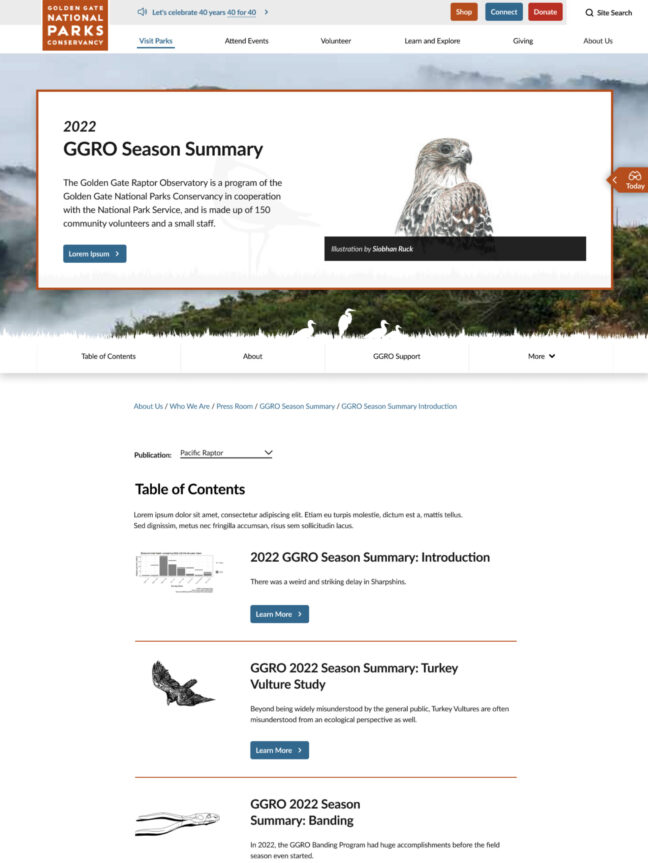
Many of Parks Conservancy’s reports — ranging from the annual report to subject-specific ones like birds — were scattered across third-party platforms, making them harder to find and manage. To solve this, we built a Reports section in Drupal, enabling staff to create and index reports directly within the site. This ensures reports are easy to search, consistent in presentation, and always available in one place.
MapBox for maps
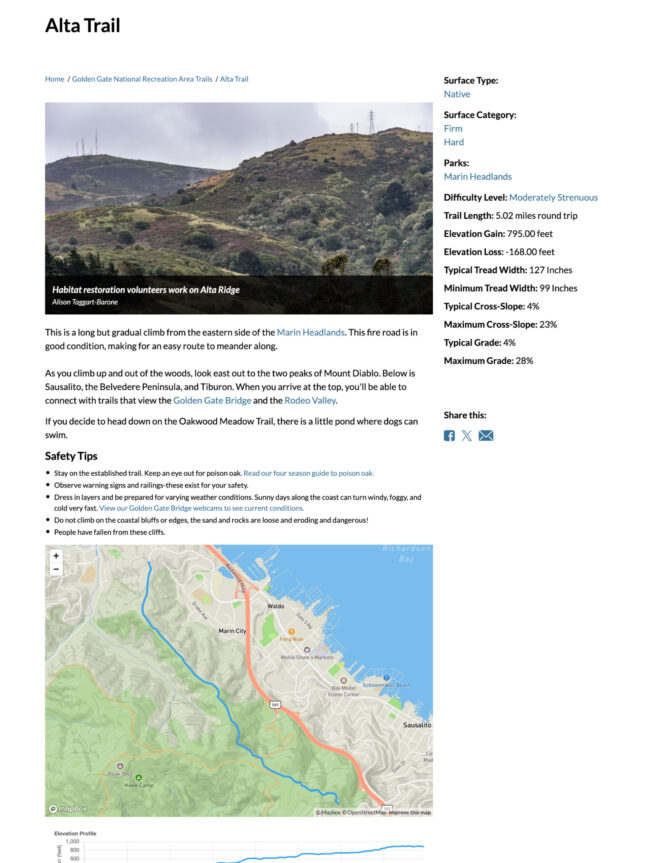
To create their own park and trails maps for visitors, Parks chose MapBox, a more affordable, flexible, and efficient solution.
The result
The Parks Conservancy team is thrilled with the results of the redesign, and Kanopi is proud to have partnered with them throughout the two-year process. By collaborating closely with a variety of decision-makers, we were able to ensure the new site met both organizational goals and user needs.
Editors now enjoy a simplified content creation process that reduces complexity to just a few clicks. What was once cumbersome and fragmented is now streamlined, flexible, and fully aligned with the Parks Conservancy’s brand. With the added stability and functionality of Drupal 10, their team has the tools they need to create and manage content more efficiently than ever before.
Kanopi is honored to support such a pivotal website for the Bay Area. Through our ongoing Support program, we continue to expand features and introduce new components, helping the Parks Conservancy evolve their digital presence and extend their impact well into the future.


